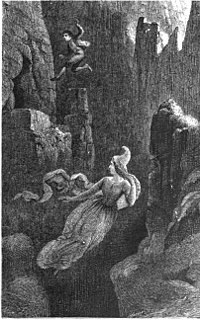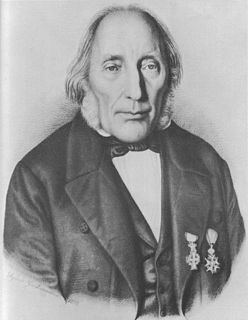Landsbókasafn Íslands – Háskólabókasafn is the national library of Iceland which also functions as the university library of the University of Iceland. The library was established on December 1, 1994 in Reykjavík, Iceland, with the merger of the former national library, Landsbókasafn Íslands, and the university library. It is by far the largest library in Iceland with about one million items in various collections. The library's largest collection is the national collection containing almost all written works published in Iceland and items related to Iceland published elsewhere. The library is the main legal deposit library in Iceland. The library also has a large manuscript collection with mostly early modern and modern manuscripts, and a collection of published Icelandic music and other audio. The library houses the largest academic collection in Iceland, most of which can be borrowed for off-site use by holders of library cards. University students get library cards for free, but anyone can acquire a card for a small fee. The library is open for public access.

Árni Magnússon was an Icelandic-Danish scholar and collector of manuscripts. He assembled the Arnamagnæan Manuscript Collection.
"Gleðibankinn" was the Icelandic entry in the Eurovision Song Contest 1986, performed in Icelandic by ICY, where singers Eiríkur Hauksson, Helga Möller and Pálmi Gunnarsson joined their efforts. This was Iceland's debut entry in the Eurovision Song Contest and consequently the first time that Icelandic had been heard.

The Social Democratic Party was a social-democratic political party in Iceland. It was founded in 1916 as the political representation of the trade unions of Iceland.

The "Lady of the Mountain" (Fjallkona) is the female incarnation of Iceland.

Hidden people are elves in Icelandic and Faroese folklore. They are supernatural beings that live in nature. They look and behave similarly to humans, but live in a parallel world. They can make themselves visible at will.

Eiríkur Hauksson is an Icelandic heavy metal vocalist who is trained as a teacher.
Iceland selected their participant using their national final, known as Söngvakeppni Sjónvarpsins 2007. Eiríkur Hauksson represented Iceland at Eurovision with the song "Valentine Lost". Before the final, there were three semi-finals, comprising 24 songs in total, leading up to the final in Reykjavík which took place on February 17, 2007. Nine song were performed in the Icelandic final, all written by Icelandic composers and sung in Icelandic. The chosen song is written by Kristján Hreinsson and composed by Sveinn Rúnar Sigurðsson. This was the third time Eiríkur performed at Eurovision, having represented the country for the first time in 1986, the year of Iceland's debut in the contest. The second time, Eiríkur performed a song for Norway.
In the Shadow of the Raven is the title of a 1988 film by Hrafn Gunnlaugsson, set in Viking Age Iceland. The film was selected as the Icelandic entry for the Best Foreign Language Film at the 61st Academy Awards, but was not accepted as a nominee.
ICY was a vocal trio consisting of Pálmi Gunnarsson, Helga Möller and Eiríkur Hauksson. They were the first Icelandic entrants to the Eurovision Song Contest, appearing at the 1986 final in Bergen. Their entry, "Gleðibankinn" or The Bank of Fun, placed 16th.

Björn Gunnlaugsson was an Icelandic mathematician and cartographer. For the Icelandic Literary Society, he surveyed the country from 1831 to 1843. The results of his work were published in a topographic map of Iceland at a scale of 1:480,000 on four sheets. It was the first complete map of Iceland and, although generally dated to 1844, was not completed until 1848. It was published under the direction of Olaf Nikolas Olsen in Copenhagen. In 1849, a smaller edition on one sheet at a scale of 1:960,000 appeared. For his survey work, Björn received the Order of the Dannebrog in 1846 and the French Légion d'honneur in 1859.
Eiríkr or Eiríkur Magnússon was an Icelandic scholar at the University of Cambridge, who taught Old Norse to William Morris, translated numerous Icelandic sagas into English in collaboration with him, and played an important role in the movement to study the history and literature of the Norsemen in Victorian England.
Dr. Sigfús Blöndal was an Icelandic language author, and a librarian at the Royal Library in Copenhagen, best known for Konunglega bókasafnið, which he wrote with his wife, Björg Þorláksdóttir Blöndal, and a small team of scholars, whose names appear on the title page. The couple and the other scholars took nearly 20 years to compile the dictionary, which was first published in 1920-1924. Two new editions have since been published. A supplement was published in 1963 by the editors Halldór Halldórsson and Jakob Benediktsson. Blöndalsbókin or Orðabók Blöndals, as it is usually called by Icelanders, is an essential source of the Icelandic language.
Eiríkur Rögnvaldsson is an Icelandic linguist and professor of Icelandic at the University of Iceland. He is the author of several prominent works on the Icelandic language, including Íslensk hljóðkerfisfræði, Íslensk rímorðabók, and several textbooks for university and high school students. He is also a prominent Icelandic scholar in the field of natural language processing, having among other things co-authored the Icelandic Parsed Historical Corpus.
Bogi Thorarensen Melsteð was an Icelandic historian. He wrote articles and books on Icelandic history. He was Member of the Icelandic Parliament (Althing) for Árnessýsla from 1892–1893.
Séra Eiríkur Magnússon í Vogsósum, was an Icelandic priest and Galdrmaster. He is known in Icelandic folklore, where there are many folktales about his alleged magical abilities. He owned the farm Vogsósar, and was the vicar of Selvog church in the parish of Selvogur from 1677–1716. Some tales with him as the hero center on his magical duels with Stokkseyrar-Dísa. As a child he attended the Cathedral School at Skálholt to about 1658 and was ordained in 1668 by Bishop Brynjólfur Sveinsson as curate of Arnarboeli. He became the parish priest of Vogsósar in 1667.
Dr Jón Stefánsson (1862-1952) was an Icelandic scholar. He wrote many books, articles and contributions to periodicals.

Eiríkur Örn Norðdahl is an Icelandic writer. For a long time most noted as an experimental poet, he has recently also come to prominence as one of Iceland's foremost prose writers.

Eirikur Bergmann is an Icelandic academic and writer. He is author of eight academic books and three novels.








